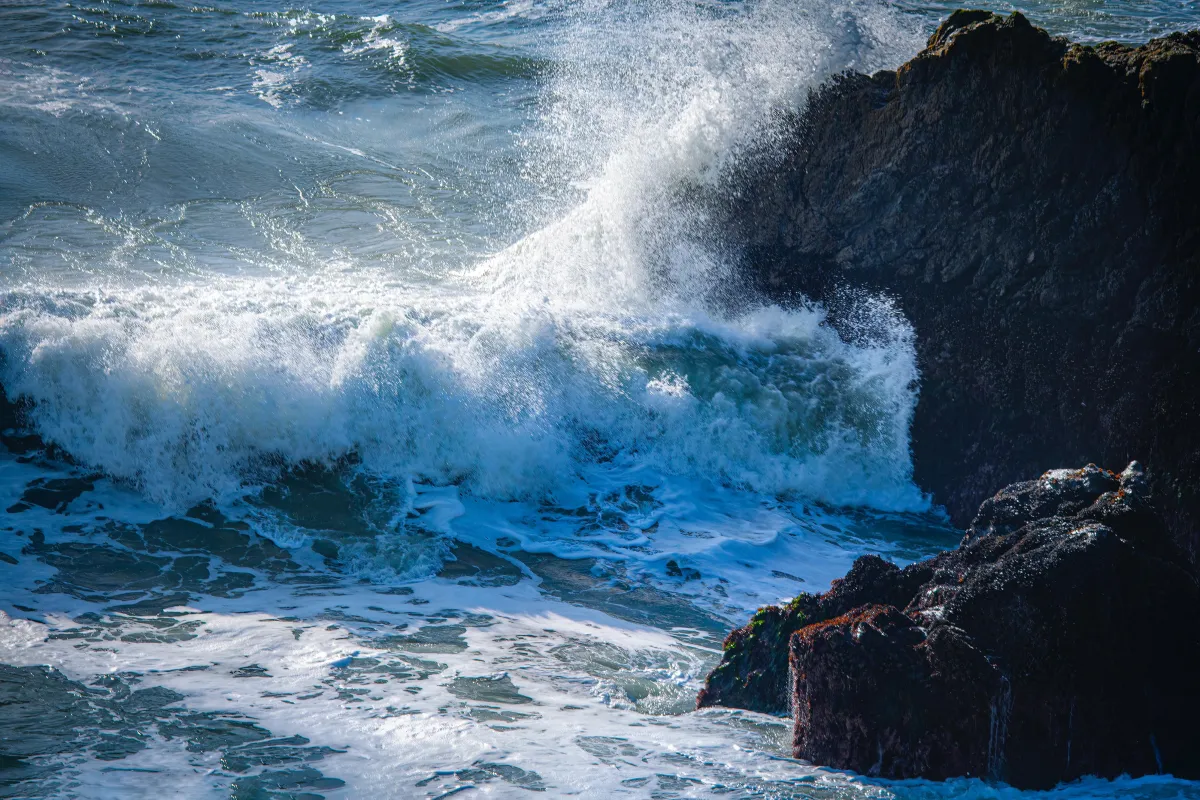
Easily Influenced
Each day, the ocean inhales and exhales. Shorelines swell, then retreat, pulled by forces older than memory. This rhythm—the tide—is the ocean’s heartbeat, driven not by chance but by the gravitational dance of Earth, moon, and sun.
The Moon’s Embrace
The moon, though small beside the sun, rules the tides. Its gravity draws the ocean into a bulge on the side of Earth that faces it. Another bulge forms on the far side, where inertia pushes water outward. As Earth rotates, coastlines move through these bulges, creating the rise and fall of high and low tides.
The Sun’s Influence
The sun, 27 million times more massive than the moon but far more distant, also pulls at the sea. When the sun and moon align—at new and full moons—their forces combine, producing spring tides: higher highs, lower lows. When they sit at right angles—first and third quarters—the result is neap tides, modest in range.
Earth’s Spin and Patterns of Time
As Earth rotates, most coasts experience two highs and two lows in roughly 24 hours, called semidiurnal tides. Some places see only one of each (diurnal tides), while others feel a mix. These variations are the ocean’s signature, shaped by geography and Earth’s turning.
Geography’s Signature
No two coastlines feel the tide the same. Narrow bays amplify the motion, funneling water higher. Estuaries, shallows, and continental shelves shape the range and timing. In Canada’s Bay of Fundy, tides rise more than 50 feet, while elsewhere they barely stir the sand.
Subtle Forces
Coriolis Effect: Earth’s spin causes tidal currents to rotate counterclockwise in the Northern Hemisphere, clockwise in the Southern.
Winds and Currents: Strong winds can push water inland, altering tide height; ocean currents add their own influence.
Local Shape: The exact curve of a coastline can amplify or muffle tidal flow, turning physics into poetry written in water.
Why Tides Matter
For sailors, tides mean safe passage—or peril. For coastal dwellers, they shape fishing, farming, and planning. For scientists, tides reveal the intricate pull between celestial bodies and Earth itself. And for anyone who has walked a beach, tides mark time, the rhythm of the sea written on sand.
The tide is more than water moving. It is gravity made visible, the moon’s touch felt across continents, the sun’s distant pull carried into harbors and estuaries. To watch the tide is to watch the universe at work.
🌙 The Pull of the Tides — Sources
NOAA. Tides and Water Levels.
Cartwright, D. E. (1999). Tides: A Scientific History.
Pugh, D. & Woodworth, P. (2014). Sea-Level Science.
National Ocean Service. What causes tides?